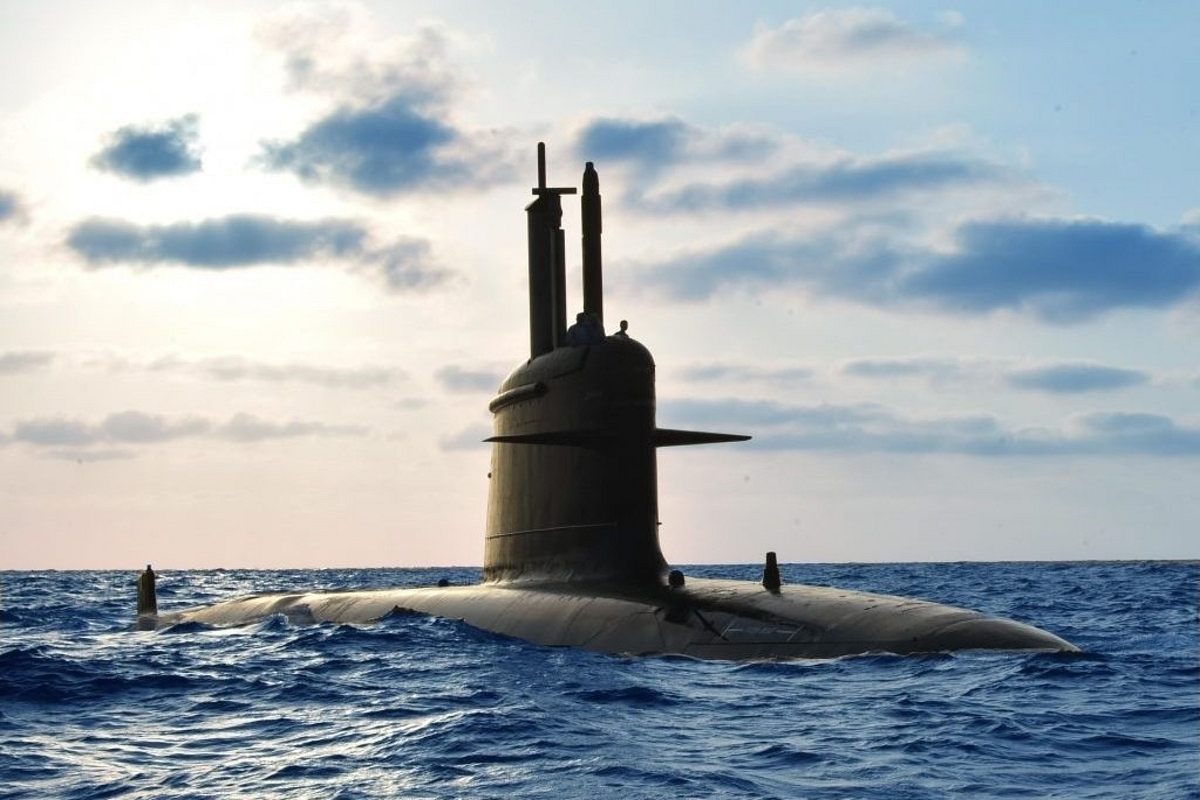Defence
Indian Navy To Seek Green Light For Three New AIP-Equipped Submarines

An Scorpene-class submarine of the Indian Navy.
The Indian Navy is reportedly preparing to approach the Defence Acquisition Council (DAC) to seek approval for the construction of three diesel attack submarines with Air Independent Propulsion (AIP) technology. The submarines are expected to be built in collaboration with the French Naval Group at Mazagon Dock Shipbuilders Limited (MDL).
According to a report in the Hindustan Times, the contract to build three AIP submarines for the Navy is expected to be awarded to MDL. The decision to entrust MDL with this project was made after taking into account the specific requirements of the Indian Navy.
Over the last decade, MDL has delivered six Kalvari-class submarines, based on the French Scorpene class, to the Indian Navy. The sixth submarine, INS Vagsheer, is currently undergoing trials and scheduled to be commissioned into the Navy before March 2024.
The AIP system developed by the Defence Research and Development Organization will be fitted in these submarines. The AIP technology will be tested and validated by the French Naval Group before being fitted into the new submarines. The Kalvari-class submarines, starting with INS Kalvari, will also be equipped with the same system as they receive mid-life upgrades.
An AIP system gives a submarine the ability to remain submerged underwater, away from enemy sensors, for a long time without surfacing. A diesel-electric boat not equipped with an AIP has to snorkel frequently to recharge its batteries which power its propellers and other equipment.
The process of snorkeling involves travelling just below the surface of the water with the submarine’s periscope and generator exhaust pipe above the surface. Submarines have to rise to periscope depth and extend the snort mast above the water line—every day or two in some cases—so as to ingest air needed for running noisy diesel generators (which require atmospheric air) to charge their batteries. This significantly increases the risk of detection.
Radars on modern anti-submarine warfare platforms, such as the Telephonics’ AN/APS-153(V) on the Indian Navy's MH-60R helos to detect Chinese boats in the Indian Ocean, can easily detect periscope and exhaust pipes, taking away the element of surprise critical for submarines.
An AIP system reduces the need for snorkeling by enabling it to generate electricity for charging its batteries while completely submerged. As a result, it improves a submarine’s ability to remain undetected.
Most AIP systems installed on submarines use liquid or compressed oxygen or hydrogen fuel cells to reduce the need for external sources. DRDO’s AIP is based on Phosphoric Acid Fuel Cell technology, which offers relatively longer life and more efficiency, making it cost-effective.
Support Swarajya's 50 Ground Reports Project & Sponsor A Story
Every general election Swarajya does a 50 ground reports project.
Aimed only at serious readers and those who appreciate the nuances of political undercurrents, the project provides a sense of India's electoral landscape. As you know, these reports are produced after considerable investment of travel, time and effort on the ground.
This time too we've kicked off the project in style and have covered over 30 constituencies already. If you're someone who appreciates such work and have enjoyed our coverage please consider sponsoring a ground report for just Rs 2999 to Rs 19,999 - it goes a long way in helping us produce more quality reportage.
You can also back this project by becoming a subscriber for as little as Rs 999 - so do click on this links and choose a plan that suits you and back us.
Click below to contribute.
Latest